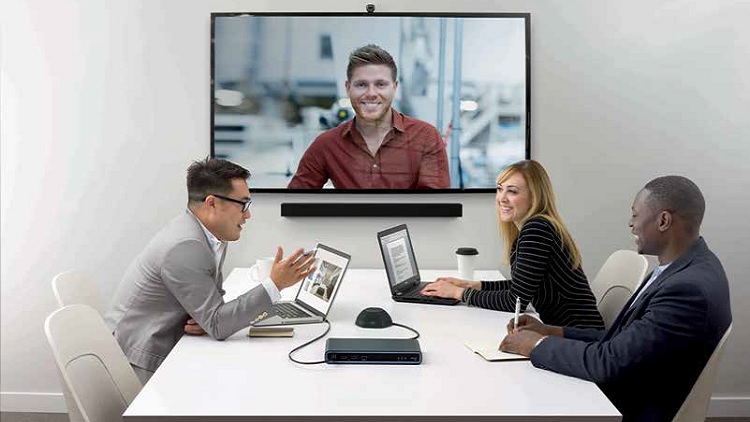Ah, the huddle room. That convenient solution for hosting on-the-fly meetings while optimizing use of random unoccupied spaces in an office layout. It seems like a dream solution for all who wish to improve productivity, except for three very important parties who use these spaces for conferencing: near-end meeting participants, far-end meeting participants, and the tech managers who endure complaints from both ends. Meetings in these small, reverberant spaces frankly don’t sound very good. But that doesn’t have to be the case. Here’s how to take a huddle room to the next level with a bit of thoughtfulness about acoustics and technology tools that improve audio.
1) TAKE A HARD LOOK AT ROOM ACOUSTICS.
Ben Bausher, Senior Consultant, Audio and Video Systems Group, Jaffe Holden
Good science applies to all parts of audio—from a huddle rooms to an arena. Intelligibility is at its best when the acoustics of a room are between 0.6 and 1 second at the key vocal frequencies. If your room has poor acoustics, there are no electronic solutions to solve your problem. Band aids, sure, but no real meaningful solutions. Once your room acoustics are good, get your transducers—microphones and loudspeakers—as close to the occupants’ heads as is reasonable. The less the room is involved the clearer the sound will be for people in the room as well as the far-end listeners.
2) REALLY, GET YOUR MICROPHONES UP CLOSE AND PERSONAL.
Randall Lee, Director Strategic and Channel Marketing, Revolabs
There’s no one-size-fits-all solution for audioconferencing. Microphones have to compensate for the size and shape of the room and the environment, including reverberation, acoustics, and where people are positioned. With DSP technology, the noise floor can be reduced to boost intelligibility, but there are limits to what it can do. The best approach to capture clear audio is placing mics equidistant from the people who are speaking. The closer a mic is to that person, the less likely unwanted noise will be picked up. For the far end, this presents everyone at the same volume and reduces audio fatigue.
3) IF YOUR HUDDLE ROOM IS ACTUALLY JUST AN AREA SET ASIDE IN AN OPEN OFFICE, CONSIDER SOUND MASKING.
Mark Hughes, Senior Marketing Manager, Cambridge Sound Management
Huddle rooms usually have nothing to block sound from coming in and out—they often have short walls and sometimes they don’t even have a door. This causes speech privacy concerns and noise distractions. Adding sound masking to the workplace, both inside and outside the huddle room, has the dual benefit of keeping the meeting private, and from it distracting the people outside in the cube farm who might be trying to concentrate. Additionally, the masking inside the huddle room would help cover up conversations happening outside of it, making it easier for huddle room occupants to focus on the meeting.
4) OPTIMIZE THOSE WHIZ-BANG DSP FEATURES, AND AGAIN, REMEMBER THE ACOUSTICS.
Rob Houston, Product Manager, Unified Communications, Biamp Systems
Enhancing audio quality in huddle rooms requires two areas of focus. First is the technology deployed in the room—conferencing solutions that provide 360-degree microphone coverage, automatic tracking and mixing of multiple talkers who often move around the room, and capabilities like AEC and noise cancellation will bring “higher end” audio to these smaller spaces. Second is the design of the room – acoustic considerations like wall treatments that offset the impact of reflective surfaces like windows and whiteboards will help your technology perform at its best, bringing clear and exceptional audio quality to these important spaces.
5) IF YOU’RE REALLY GOING TO GET ACOUSTICS RIGHT, START WITH THE ARCHITECT.
Martin Barbour, Product Manager, QSC Systems
In order to get the best audio in a huddle room, it’s important to work with the architect from the get-go to ensure the acoustics in the room are suitable. That includes the room treatments – the walls aren’t too reflective and the chairs and carpet are conducive to a good acoustic environment. In addition, you should consider EQ and processing consideration, even for small huddle room spaces. A solution featuring routable AEC channels with a noise reduction algorithm and adaptive threshold automixers can be used to reduce ambient and background noise being sent to the far end.
